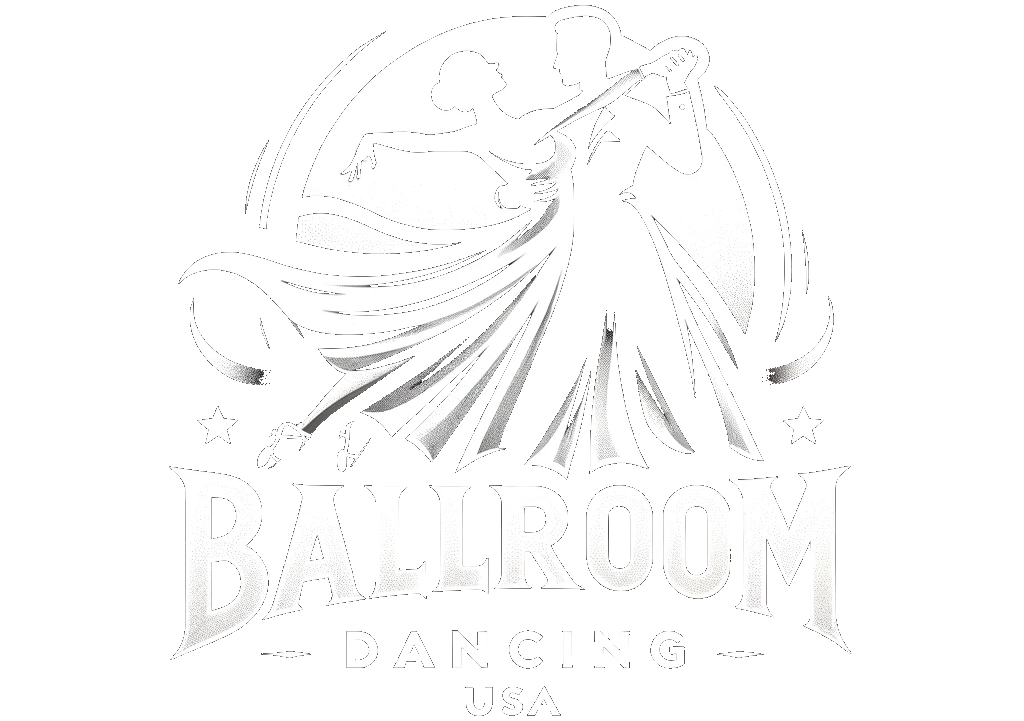
Dance Parties at the Spice Restaurant in Pittsfield MA
At the Spice Restaurant Ballroom – Groundhog Day dance party with the O-Tones – a Hot Swing, R&B, and Motown Dance Band. Cover includes snacks
Let's uncover ballroom dancing nearest to you.
Just looking around? Let us suggest you something hot & happening!

Ballroom dancing in US cities

At the Spice Restaurant Ballroom – Groundhog Day dance party with the O-Tones – a Hot Swing, R&B, and Motown Dance Band. Cover includes snacks
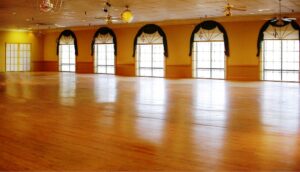
1. Introduction to Ballroom Dance Spaces Introduction to Ballroom Dance Spaces Ballroom dance spaces are places where people come together to experience the joys of
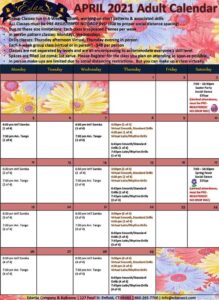
Berkshire! local area oldies and ballroom dance band Champagne Jam dance schedule Latin! Wednesday in Northampton Friday in Hadley Saturday in Haydenville Thursdays in Saratoga
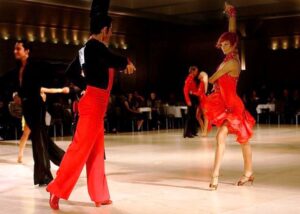
1. Introduction to ballroom dance as a form of cultural heritage Introduction to Ballroom Dance as a Form of Cultural Heritage Ballroom dance is a

1. Introduction to Ballroom Dance and the Silver Screen Introduction to Ballroom Dance and the Silver Screen Ballroom dance has been a part of the
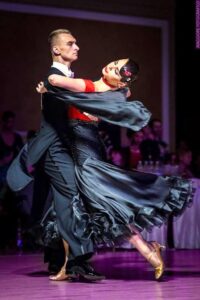
1. Introduction: Introduction Ballroom dancing is a form of artistic expression that has been practiced in the United States since the early 19th century. It
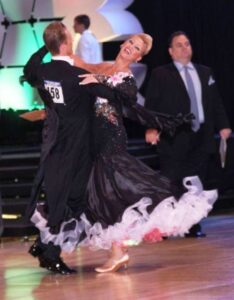
1. Introduction Introduction Ballroom dancing is an art form that has been enjoyed by people around the world for centuries. In the United States, ballroom

The number you just clicked on is generated by our privately maintained counter program. It represents the cumulative hits this page has had since its
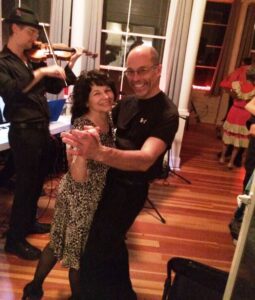
Tango dancers, honored guests… Join us to practice all of your amazing tango. Join your friends and local tango dancers for a rousing good time.
Introduction
Ballroom dancing is an elegant and captivating art form that has a rich history and significant influence on American culture. From traditional waltzes to modern Latin dances, ballroom dancing has captured the hearts of many in the United States. This article aims to explore the world of ballroom dancing in the U.S., tracing its origins, discussing its popularity, and examining its cultural impact.
The introduction section will provide a comprehensive overview of the topic, setting the stage for the rest of the article. It will consist of the following elements:
By delving into the world of ballroom dancing, this article seeks to celebrate the beauty and artistry of this captivating dance form while also highlighting its cultural significance within American society.
Ballroom dancing has a fascinating history in the United States, encompassing a diverse range of styles and influences. This section will delve into the origins of ballroom dancing, its impact on American culture, an overview of traditional ballroom dances such as waltz, tango, and foxtrot, and the role of immigration and musical genres in shaping the development of ballroom dancing in the U.S.
Ballroom dancing traces its roots back to the grand ballrooms of Europe, where it emerged as a form of social entertainment in the 17th and 18th centuries. As waves of immigration brought people from various cultural backgrounds to the United States, ballroom dancing found its place in American society. It became a symbol of elegance, refinement, and social status, influencing the cultural fabric of the nation.
The section will provide an overview of traditional ballroom dances that have played a significant role in American ballroom dancing, including the waltz, tango, and foxtrot. Each dance will be described, highlighting its characteristics, tempo, and distinctive movements. The waltz, with its graceful rotations and flowing movements, gained popularity in the late 19th century. The tango, known for its passion and dramatic flair, emerged in the early 20th century. The foxtrot, a smooth and versatile dance, gained prominence in the jazz age.
The development of ballroom dancing in the United States was profoundly influenced by immigration and the infusion of diverse cultural traditions. European immigrants brought their dance styles and techniques, enriching the American ballroom dance scene. Additionally, the influence of African-American and Latin American communities introduced vibrant rhythms and dance forms into the mix. The emergence of jazz, swing, and Latin music genres further contributed to the evolution of ballroom dancing, with dances like the Lindy Hop and the cha-cha-cha gaining popularity.
The fusion of different cultural influences and musical genres in the United States created a unique and vibrant ballroom dance scene. It reflected the nation’s rich diversity and provided a platform for social interaction, self-expression, and artistic exploration.
Modern ballroom dancing in the United States encompasses a wide range of popular dances that have gained widespread recognition and enthusiastic participation. This section will provide an overview of contemporary ballroom dances, such as salsa, cha-cha-cha, rumba, jive, and others. It will include descriptions of each dance, their styles, musical accompaniment, and explore the influence of pop culture and television shows on the popularity of these dances in the United States.
This section will introduce readers to a selection of popular modern ballroom dances that have captured the attention of dancers and enthusiasts in the United States. Examples may include salsa, a lively and rhythmic dance originating from Latin America, the vibrant and flirtatious cha-cha-cha, the sensual and romantic rumba, and the energetic and fast-paced jive. Each dance will be briefly described, highlighting its distinctive characteristics and overall style.
For each modern ballroom dance, the section will delve deeper into its specific style and characteristics. It will explore the footwork, partnering techniques, body movements, and the connection between the dancers. Additionally, the section will touch upon the musical genres that accompany each dance, such as salsa music for salsa dancing and swing music for jive, emphasizing the importance of rhythm and musicality in the execution of these dances.
The popularity of modern ballroom dancing in the United States has been significantly influenced by pop culture and television shows. This section will discuss how dance-themed television programs, such as “Dancing with the Stars” and “So You Think You Can Dance,” have introduced ballroom dancing to a wider audience. These shows have not only showcased the talent and skill of professional dancers but have also inspired amateurs to take up ballroom dancing as a recreational activity.
Furthermore, the impact of popular music artists incorporating ballroom dance elements into their performances will be explored. The section may highlight notable examples, such as music videos or live stage performances that have prominently featured ballroom dance styles, thereby increasing their visibility and appeal.
Through the influence of pop culture and television shows, modern ballroom dances have become more accessible and enjoyed by people from various backgrounds, contributing to the vibrant dance community in the United States.
Ballroom dancing extends beyond the dance floor, impacting social relationships, communication, physical activity, and personal development in the United States. This section will explore the influence of ballroom dancing on social connections, its role as a form of physical activity for maintaining health, and its contribution to community building and personal growth.
Ballroom dancing provides a unique platform for individuals to connect and interact with others. This section will examine how participating in ballroom dance classes, social dances, and events fosters social bonds and enhances communication skills. It will highlight the importance of partnership and cooperation in ballroom dancing, as couples navigate intricate patterns and movements together, promoting trust, teamwork, and effective communication.
Ballroom dancing offers numerous physical and health benefits. This section will discuss how ballroom dancing serves as a form of exercise that combines cardiovascular activity, strength training, and flexibility. It will explore the positive impact of regular participation in ballroom dancing on physical fitness, coordination, balance, and overall well-being. Additionally, it can touch upon the potential mental health benefits, such as stress reduction and improved cognitive function, associated with engaging in ballroom dancing.
Ballroom dancing creates a sense of community and belonging among its participants. This section will emphasize how dance studios, clubs, and social events bring people together who share a common passion for ballroom dancing. It will examine the support networks and friendships that develop within these communities, providing emotional support, encouragement, and opportunities for personal growth. Furthermore, it can explore how the discipline and perseverance required in mastering ballroom dance techniques can contribute to self-confidence, self-expression, and personal development.
Ballroom dancing’s impact on the social sphere extends far beyond the dance floor, enriching interpersonal relationships, promoting physical well-being, and fostering a sense of community and personal growth among its practitioners in the United States.
Competitive ballroom dancing has established a thriving world within the United States, showcasing the skill, artistry, and dedication of dancers. This section will provide an overview of the competitive ballroom dance scene in the U.S., including the description of the competition world, an exploration of different levels and categories of competitions, and an examination of the training process, professional dancers, and their achievements.
This section will introduce readers to the competitive ballroom dance scene in the United States, which comprises a dynamic and passionate community of dancers, coaches, and adjudicators. It will discuss the various platforms where competitions take place, such as dance festivals, championships, and showcases. The section can highlight the electrifying atmosphere, the excitement of the audience, and the level of competitiveness that characterizes these events.
Competitive ballroom dancing offers different levels and categories to accommodate dancers of various skill and experience levels. This section will provide an overview of the hierarchy of competitions, ranging from beginner and amateur levels to professional divisions. It will describe the different dance styles and categories, such as Standard (e.g., waltz, tango) and Latin (e.g., cha-cha, rumba), as well as highlight the distinctions between solo, couples, and team events.
This section will delve into the rigorous training process undertaken by competitive ballroom dancers. It will discuss the commitment required, including hours of practice, physical conditioning, and honing technical skills. The section can also spotlight professional dancers, their career paths, and notable achievements in the competitive ballroom dance world. It may touch upon their accomplishments in national and international competitions, their artistic contributions, and the impact they have on shaping the future of ballroom dancing.
Competitive ballroom dancing provides a platform for dancers to showcase their talent, express their artistry, and strive for excellence. It combines technical precision, artistic interpretation, and a deep passion for the dance, creating a captivating and inspiring world within the United States.
The United States has been home to numerous renowned ballroom dancers and dance couples who have made significant contributions to the development and promotion of ballroom dancing. This section will provide an overview of some of the notable ballroom dancers and dance partnerships in the U.S., discuss their impact on the dance community, and highlight their achievements and recognition at national and international levels.
This section will introduce readers to some of the well-known ballroom dancers and dance couples who have left a lasting impression in the United States. It may include legendary figures such as Fred Astaire and Ginger Rogers, whose graceful and captivating performances brought ballroom dancing to the forefront of popular culture. Additionally, it can feature contemporary stars like Derek Hough, Karina Smirnoff, Mark Ballas, and others who have achieved fame through their dance careers and appearances on dance-themed television shows.
This subsection will explore how famous ballroom dancers and dance couples have contributed to the growth and advancement of ballroom dancing in the United States. It can discuss their roles as ambassadors for the art form, their efforts in raising awareness about ballroom dancing through performances, teaching, and choreography, and their dedication to preserving and evolving the dance styles. Furthermore, it can emphasize their influence in attracting new audiences and inspiring the next generation of dancers.
This section will highlight the achievements and accolades of the famous ballroom dancers and dance couples on both national and international platforms. It may include their victories in prestigious competitions such as the United States Dance Championships, Blackpool Dance Festival, or the World DanceSport Federation events. The section can also mention their contributions as judges, choreographers, or ambassadors in the competitive ballroom dance world, and any honors or awards they have received for their contributions to the art of ballroom dancing.
These famous ballroom dancers and dance couples have made indelible marks on the American dance landscape, using their talent, artistry, and passion to propel ballroom dancing to new heights and inspire generations of dancers to follow in their footsteps.
There are numerous dance schools and studios in the United States that specialize in teaching ballroom dancing. This section will provide information about various dance schools and studios dedicated to ballroom dancing, offer an overview of their training programs and classes, and highlight their role in the development of the dance community and the preparation of future professional dancers.
This section will introduce readers to a selection of notable dance schools and studios in the United States that focus on ballroom dancing. It can mention renowned institutions such as Arthur Murray Dance Centers, Fred Astaire Dance Studios, or independent local studios that have gained recognition for their quality instruction and commitment to promoting ballroom dancing.
This subsection will provide an overview of the training programs and classes offered by these dance schools and studios. It may discuss the variety of programs available, such as beginner, intermediate, and advanced levels, as well as specialized programs for competitive dancers, wedding dance preparation, or social dance enthusiasts. The section can highlight the curriculum, teaching methods, and the emphasis on technique, partnering skills, musicality, and performance.
This section will emphasize the important role that dance schools and studios play in the development of the dance community and the nurturing of future professional dancers. It can discuss how these establishments provide a platform for dancers of all levels to learn, grow, and connect with like-minded individuals. The section may also touch upon the opportunities these schools and studios offer for students to participate in showcases, competitions, and performances, fostering a sense of community and inspiring a new generation of dancers.
Additionally, it can mention the role of these institutions in training aspiring professional dancers, their partnerships with dance organizations, and their contributions to the overall advancement and visibility of ballroom dancing in the United States.
Dance schools and studios specializing in ballroom dancing contribute significantly to the dance landscape in the United States by providing comprehensive training programs, fostering community engagement, and nurturing the talent of aspiring dancers, ensuring a vibrant future for ballroom dancing in the country.
The United States is home to a rich array of dance events and festivals dedicated to ballroom dancing. This section will provide a list and description of significant dance events and festivals that celebrate ballroom dancing, mention specific competitions, showcases, and related activities associated with ballroom dancing in the U.S., and examine the influence of these events in promoting and popularizing ballroom dancing in society.
This subsection will highlight a selection of significant dance events and festivals that showcase ballroom dancing in the United States. It may include renowned events such as the Ohio Star Ball, the Emerald Ball, the United States Dance Championships, or the Manhattan Dancesport Championships. Each event can be briefly described, including its history, scale, and reputation within the dance community.
This section will focus on specific competitions, showcases, and events that are closely associated with ballroom dancing in the United States. It can mention prestigious competitions like the United States National DanceSport Championships or the Blackpool Dance Festival U.S. Championships. Additionally, it can discuss special showcases or exhibitions that feature professional dancers, world champions, or rising stars, captivating audiences with their extraordinary skills and artistry.
This subsection will explore the influence of these events and festivals in promoting and popularizing ballroom dancing in society. It can discuss how these platforms provide opportunities for dancers to showcase their talent, inspire aspiring dancers, and attract wider public attention to the elegance and beauty of ballroom dancing. The section may also touch upon the role of media coverage, social media, and the engagement of audiences in spreading awareness and enthusiasm for ballroom dancing.
Moreover, it can discuss the significance of these events in fostering a sense of community among dancers, encouraging participation, and nurturing the growth of the dance industry, including the impact on dance education, dance careers, and the overall appreciation of ballroom dancing in the United States.
These dance events and festivals dedicated to ballroom dancing in the United States serve as important platforms for dancers to demonstrate their skills, ignite passion for dance in audiences, and contribute to the ongoing promotion and popularity of ballroom dancing throughout the country.
This section presents a list of cities in the United States that are renowned for their vibrant dance scenes and the popularity of ballroom dancing. It describes the unique features of each city related to ballroom dancing, such as dance clubs, events, and communities. The section examines the significance of these cities in the development of ballroom dancing and the opportunities they offer for practice and participation in the dance community.
These cities stand out for their active ballroom dance communities, providing diverse opportunities for dance enthusiasts, fostering the growth of ballroom dancing, and contributing to the overall dance culture in the United States.
